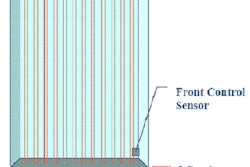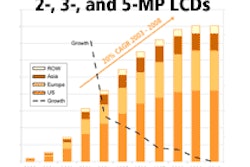The advent of less invasive, more convenient image-guided biopsy techniques has not taken a toll on overall breast biopsy rates, which have remained fairly consistent over a 12-year period in one U.S. state, according to a study in the Archives of Internal Medicine.
Dr. Karthik Ghosh and colleagues conducted a retrospective population-based analysis to determine biopsy utilization rates in Minnesota's Olmsted County. Ghosh is from the division of general internal medicine at the Mayo Clinic in Rochester, MN. His co-authors are from various departments at the clinic, including radiology and surgery, as well as from the H. Lee Moffitt Cancer Center in Tampa, FL.
"The information obtained by this study should provide valuable insight into the trends in utilization of breast biopsies and their potential implications relating to healthcare utilization and costs," the group wrote (Archives of Internal Medicine, July 25, 2005, Vol. 165:14, pp. 1593-1598).
The study period started in January 1988 and ended in December 1999. Utilization rates were plotted by age at biopsy and the type of biopsy, either operative or image-guided. The study cohort consisted of 2,878 biopsies in 2,521 women.
The results showed that the overall age-adjusted annual utilization rate was 62.6 per 10,000 women, which remained fairly constant during the study period. The authors reported that there were no significant changes in the breast biopsy rate after the 1992 introduction of core-needle biopsy. However, imaged-guided biopsy (stereotactic and ultrasound) were also introduced in that same year, leading to a rate increase to 27.7 per 10,000 cases in 1999, up from 0.2 per 10,000 in 1992.
The majority of biopsies were performed for radiographic breast abnormalities without a dominant mass (53%), followed by palpable lesions with a dominant mass (44%). The rate of benign biopsy results remained stable throughout the study period (median of 3.91 per 10,000). The malignant biopsy rate ranges from a low of 14.6 per 10,000 in 1989 to a high of 21.9 per 10,000 in 1995.
"We found a decreasing trend for operative biopsies over time, along with an increasing trend in image-guided core-needle biopsies starting in 1992," Ghosh's group stated. "In our study, the overall malignancy rate did not change during the study, and the benign-malignant ratio did not change with time, suggesting that the introduction of a new diagnostic breast biopsy technique, in this instance, was not associated with an increase in unnecessary biopsies."
By Shalmali Pal
AuntMinnie.com staff writer
July 26, 2005
Related Reading
Breast rads believe malpractice fears prompt more recalls, June 28, 2005
Breast imaging trends show longer waits for screening mammo, more biopsies, May 6, 2005
Breast biopsy costs big bucks, but so does cancer screening, January 19, 2005
Malpractice fears may initiate more false-positive mammograms in North America, September 16, 2003
Copyright © 2005 AuntMinnie.com



















